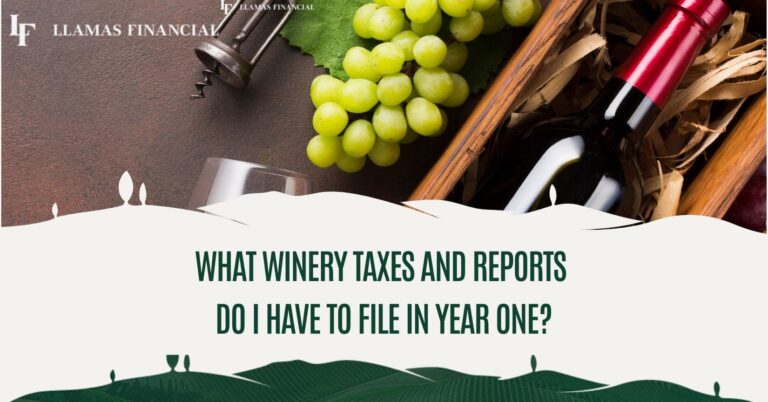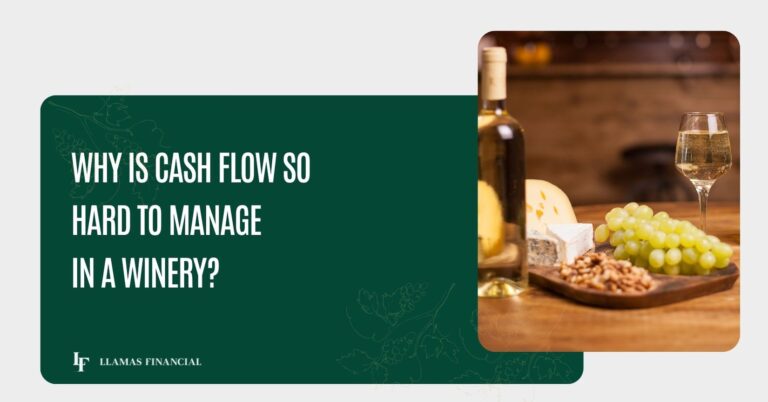If there’s one lesson we’ve learned from working side by side with wineries in Napa Valley and beyond, it’s that the difference between a profitable year and a break-even year can lie in how precisely you track costs. Wine costing is part science and part craftsmanship. When done well, it becomes your compass for pricing, channel strategies, and investment. But when you let it slide, small errors turn into margin erosion, surprises, and missed opportunities.
Over the years, we’ve seen five top wine costing mistakes that quietly sabotage many wineries’ bottom lines. Here’s what they are, and more importantly, what you can do to fix them.
1. Not Updating Cost of Goods Sold (COGS) Regularly
One of the most common issues we see in wineries is treating the cost of goods sold as a number they set and forget. You might add up grapes, barrels, and bottling at the start of the year and then never revisit it until tax time. The problem is that costs are constantly changing. Grape prices fluctuate, packaging costs spike, labor and utilities vary, and even small adjustments in the cellar can shift your real per-bottle cost.
When COGS isn’t updated regularly, you’re essentially flying blind. Pricing decisions, club offers, and distributor negotiations are all based on assumptions rather than reality, which can quietly erode your margins.
The solution is simple in principle: treat your COGS as a living metric. Update your numbers monthly or quarterly, and make sure your accounting system or production tracking captures actual costs as they happen, instead of it being a year-end task. That way, you give yourself the confidence to make pricing, production, and sales decisions based on accurate, timely data.
2. Ignoring Yield Loss And Harvest Records
Many winemakers think the hard work is done once the last ton of grapes is in the press. But the reality is, if you don’t track yields and losses in the field and the cellar, your cost numbers will always be fuzzy. You won’t know which wines are really profitable and which are quietly eating into your margins.
To fix this, start by recording the weight of grapes from each block, note the varietal breakdowns, jot down any quality observations and account for tare (the weight of bins or containers). If your team is still writing numbers on scraps of paper, consider using a mobile app so you capture the data in real time, without having to rely on memory.
Next, convert those weights into gallons or liters to calculate crush yields, and track losses through fermentation, transfers, topping, blending, and sampling. Make sure these losses are factored into your cost calculations; otherwise, the cost per bottle will be understated.
Over time, compare your expected yields to the actual yields. If there’s a big difference, investigate why. Was it weather, grape quality, or a process change in the cellar? Understanding the “why” helps you improve planning for future vintages.
When you track this consistently, what once felt unpredictable becomes data you can use. You’ll have a much clearer picture of cost per case, margin, and overall profitability, vintage after vintage.
3. Misallocating Overhead And Indirect Costs
Many wineries make the mistake of only putting direct costs into inventory and capturing all overheads as operating expenses. That may seem simpler in the short run, but it understates the value of your inventory and makes your cost per case inconsistent. You end up with a financial picture that doesn’t match what’s really happening in the cellar.
A better approach is to start by deciding which overhead categories (lab, utilities, equipment depreciation, facility costs, cellar support) should be capitalized into inventory instead of expensed right away. The goal is to make sure every case of wine carries its fair share of the hidden costs required to produce it.
Once you’ve listed the overhead items, you need to decide how to spread them across your lots. That’s where an allocation driver comes in. An allocation driver is simply the yardstick you use to divide shared costs in a fair and predictable way. It could be cellar labor hours, equipment hours, tank days, or even volume produced. You can use whatever most closely reflects the resource being consumed.
Here’s a simple example:
Let’s say you spent $10,000 on cellar overhead this month and your team logged 500 cellar labor hours across all production lots. If you choose labor hours as your allocation driver, you’d assign $20 of overhead to every labor hour. A batch that used 40 labor hours would get $800 of overhead added to its cost; a batch that used 10 labor hours would get $200. The heavier-touch lots absorb more of the overhead than lighter-touch lots, which reflects reality far better than a flat allocation.
The key is to pick a driver that makes sense for your operation and apply it consistently. Then, revisit your allocations annually or after major changes like new equipment, added staff, or expanded facilities so your overhead loading keeps pace with growth.
Document your policy and method so it’s repeatable and auditable. That discipline keeps your per-case costs stable and meaningful.
4. Weak Inventory Valuation And Reconciliation Processes
Even if your cost model is perfect on paper, it won’t help if your inventory numbers don’t match across systems. If your production logs, inventory tracking, and accounting don’t reconcile, your cost per bottle and balance sheet can’t be trusted.
Start by picking one way to value your inventory and stick with it. Whether it’s averaging costs or tracking each lot individually, consistency is far more important than perfection. Apply the same method to bulk wine, in-process wine, and finished goods, so your numbers are comparable over time.
Next, reconcile your inventory every month. Compare what your production team recorded (transfers, racking, blending, bottling, and losses) against your inventory system and your accounting records. When you spot differences, figure out why. It could be timing, misposted transactions or missing entries. Decide on a tolerance level, say anything over 1-2%, that triggers investigation.
Also, try to reduce manual entries wherever possible. Using software that automatically records transfers, blending, bottling, and aging losses reduces errors and saves time.
Finally, watch for negative inventory. If your system shows more wine sold than you actually have, it’s a red flag. Negative inventory usually points to mistakes upstream, like missing entries or misposted transfers, and can compound over time if not corrected.
5. Overlooking Channel-Specific Sales Costs
If you treat all your sales channels like one big bucket, you’re missing a big part of the story. Tasting room, club members, and wholesale each come with very different costs. The money you spend on staffing, packaging, fulfillment, and marketing for your club members isn’t the same as what it takes to ship wine to a distributor. Ignoring those differences can make your “average margin” look better than it really is.
A good first step is to create cost pools for each channel. For example, tasting room staff time, space, utilities, and retail merchandising should live in your direct-to-consumer (DTC) channel. Shipping, packaging, fulfillment, discounts, commissions, and returns should be assigned to the channel that actually pays for them.
Once you have those costs allocated, look at SKU-level channel profitability. Some wines may do great in wholesale but barely break even when sold direct to consumer, if the packaging, freight and promotional burden is high. You may need to set a slightly higher margin target in direct channels to cover those extra costs.
Don’t forget about shared overhead, like IT, admin, or office costs. Allocate them proportionally across channels, but keep them separate from the channel-specific direct costs. That way, you can see the true incremental cost of each channel.
Finally, review channel profitability regularly. Over time, you might find that your tasting room is actually more profitable per case than your trade channels once all costs are accounted for. That insight can help guide where you invest in marketing, staffing, and inventory.
When You Do This Right, The Payoff Is Real
Once you adopt a disciplined costing mindset, the benefits show themselves fast. You’ll see cleaner margins by SKU and channel, fewer surprises in cash and inventory, and sharper pricing decisions. Your finance team stops reconstruction mode and starts forward guidance. Your leadership can also confidently invest in growth, marketing, or capacity, all based on real data.
If you’d like some help to structure your costing, audit your accounting software and process, and spot key improvement areas, we’re here for you!
At Llamas Financial, we help wineries streamline their finances and improve profitability from one vintage to the next.
We recently helped one winery recover $60,000 in lost margin. Your winery could be next. Book an introductory call with us, and we’ll get right back to you.





